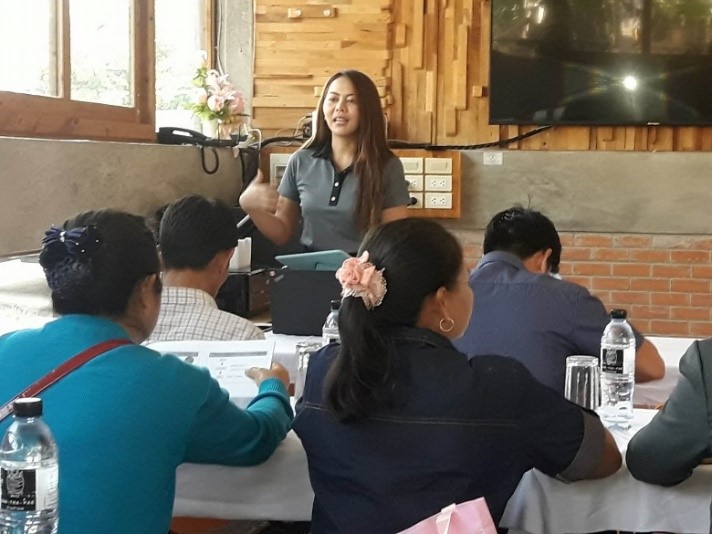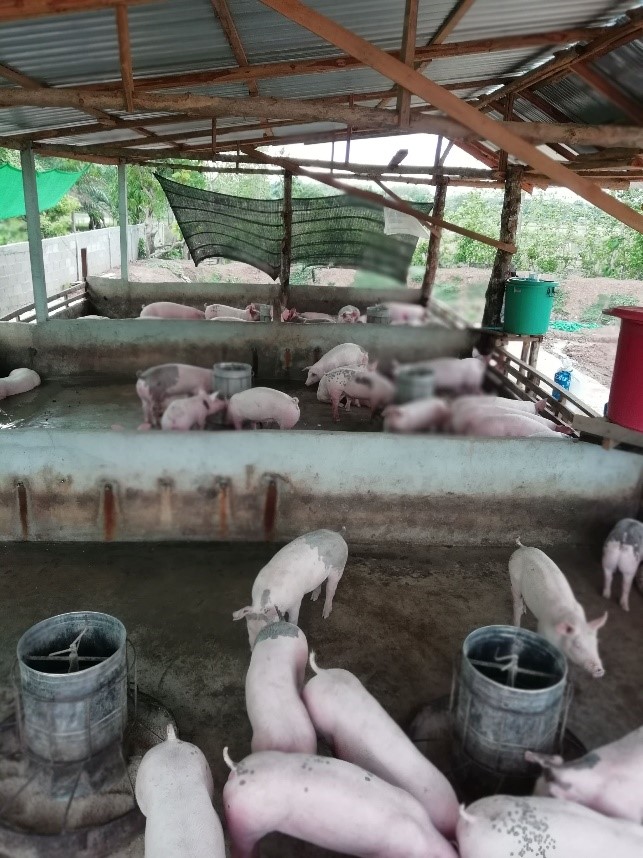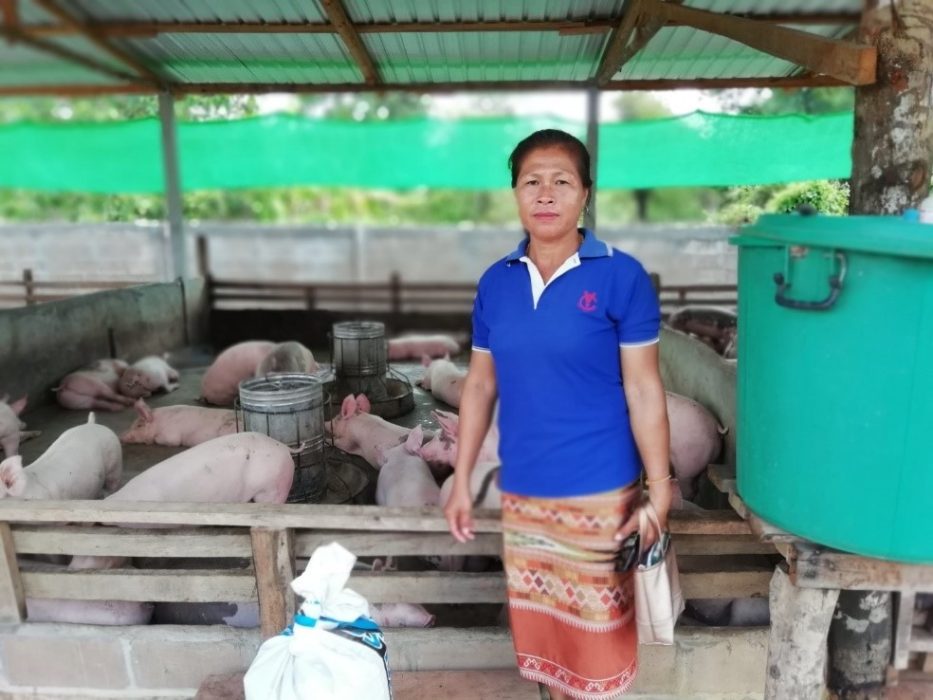
Pig farmers building bridges to success
“Working with CDAIS has given us not only knowledge and skills, but also the confidence to make connections with the government and other partners.” says Mrs Dao Sansihalath, member of the Xanakham women’s pig rearing group. “What we have learnt is practical and is helping us grow our business without having to make a lot of costly mistakes.” This has been achieved through support from the CDAIS project since 2016.
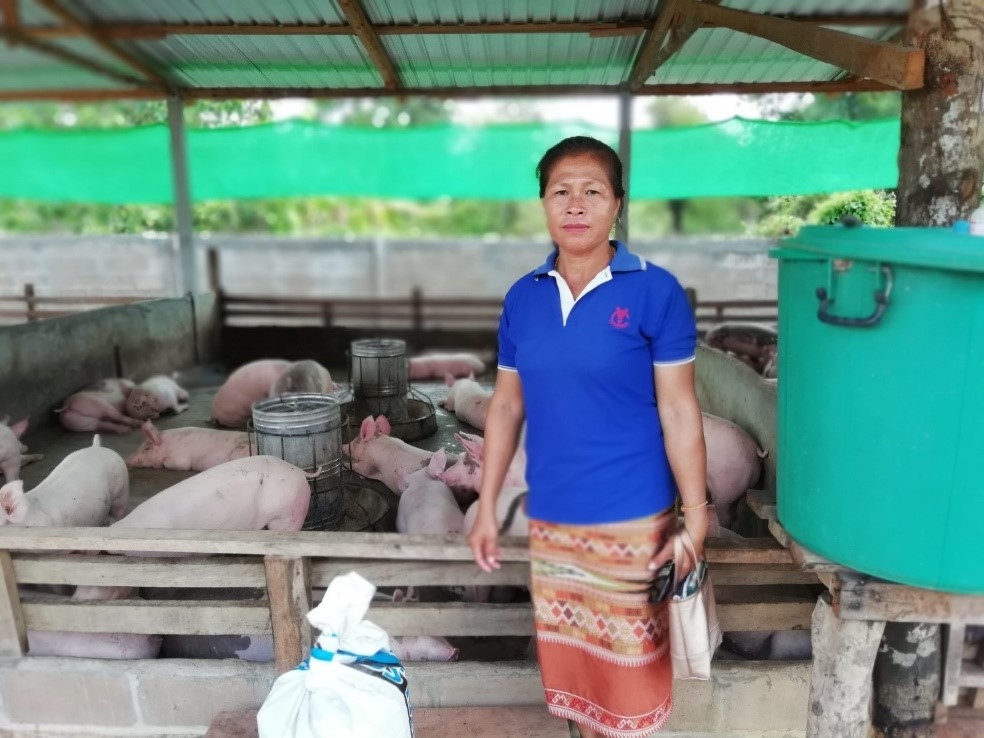
“Working with CDAIS is different to working with other projects. CDAIS doesn’t tell people what to do, it helps them decide what they want and then supports them.” Suthavon Keomanythong, Extension Officer with Xanakham District Agriculture and Forestry Office
Building on past experience
Farmers in Xanakham have been rearing pigs for generations and know that boosting production can improve their livelihoods. And only 240 km north of the nation’s capital city Vientiane, and on the banks of the Mekong River opposite Loei Province in Thailand, they are in a good position to capitalize on the growing demand for pork products. The Lao government is also aggressively promoting meat production. When word came to the Dong Kha village administration to “see what they could do”, they nominated committee member Sathian Khamchaleun to canvass the community and had little difficulty recruiting interested villagers. In 2012, there were 12 households in a loose-knit group rearing 5-10 pigs each, with more people asking to join. The group was doing well enough but not receiving much support from government agricultural extension services or the private sector.
Then in 2015, the National Agriculture and Forestry Research Institute (NAFRI) agreed to partner with CDAIS. The Xanakham pig raising group showed strong potential and was selected as one of five partnerships for Lao PDR. In May 2017, farmers presented their action plan to representatives from government, a national bank, a microfinance association, a meat processing company, and other national stakeholders at a specially organized ‘marketplace’. Members of the pig rearing group maintained contact with the meat processing company, which is providing continuing advice on value-added products. CDAIS is also supporting links to a microfinance association to help financial capacity development. “We want to know if it is going to be profitable to make products like sausages and pork rind but we needed training,” said Sathian.
Value-added products are not the only challenge for the group. “Now we buy most of our piglets in Thailand,” says Mrs Pheng, one of the bookkeepers for the group. “We want to breed our own piglets but until we can raise all we need, we buy them across the river in Thailand.” This is becoming more difficult as the government wants to restrict imports of live pigs and pork. A new bridge across the Mekong river to Thailand is only two hours from Dong Kha village. “We enjoy the trip but it costs money so our group wants to invest in breeding our own,” explains Saithian. “We will need to learn a lot but we made it part of our action plan during the CDAIS capacity needs assessment.”
Forging links, building bridges
An element of the CDAIS approach is building bridges between people. Connecting smallholders with government services means CDAIS projects will continue long after the funding ends. Based on the group’s plan, CDAIS facilitated a training and study tour to NAFRI’s Pig Research Center in Vientiane in November 2017. The group then decided they wanted to visit a commercial operation in Thailand where they have been buying piglets for some time but it was difficult for them to make arrangements on their own. The District Agriculture and Forestry Office (DAFO) offered support and CDAIS helped contact Thai farms, with one producer accepting an invitation to a consultation meeting in July 2017 leading a signed collaboration agreement between the Dong Kha pig group and Yong Yut Farm in Thailand. “Arranging the consultation meeting was an important breakthrough,” says Patrick D’Aquino, CDAIS Focal Person for Laos. “As an external agency we have a certain amount of ‘convening power’ that allows us to create space for and facilitate dialog. Once we get different stakeholders talking they usually find a way to meet everyone’s needs.”
Following the consultation meeting, the pig raising group arranged their study tour to Thailand in January 2018 with backstopping from CDAIS. Significantly, the group included two staff from Xanakham District Agriculture and Forestry Office. During the first two days, the group learnt about farm management from a Rajabhat University expert, with a third day at Yong Yut Farm for hands-on experience and visiting a feed mill where they picked up tips on optimal feeding practices. “What we learnt is practical and can help us grow our business without making a lot of mistakes,” says Mrs Dao, the group’s marketing lead.
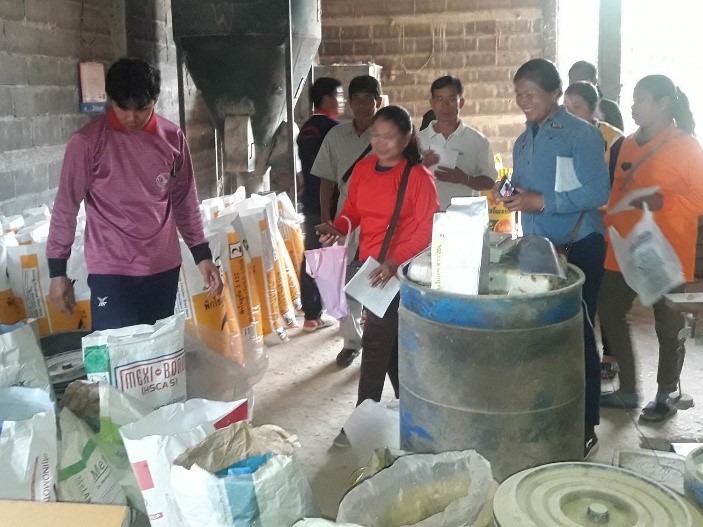
“CDAIS coaching has resulted in a better working relationship with local technical advisory staff and to new links with traders and other stakeholders.” Sathian Khamchaleun, head of the Dong Kha pig production group
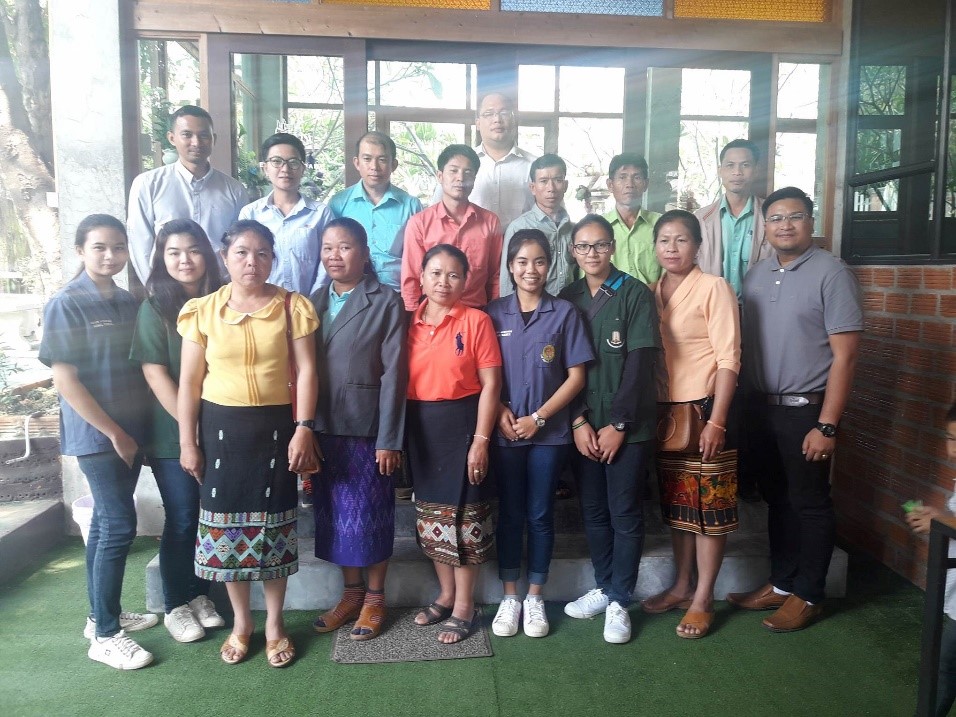
From farm gate to market
The road network in Laos is improving, making it easier for buyers to come to small villages like Dong Kha. “We sell about 80% of our pigs to middlemen who come to collect them. I meet them and negotiate a price for our members, which is better than before when everyone tried to negotiate individually. The group gives us power,” says Mrs Dao. “And everyone has mobile phones now so it is easy to check the price,” she adds. It takes about six months to raise a pig to 80-100 kg, when they can be sold for about 15,000 Lao Kip per kilo, yielding a profit of roughly US$25 per pig.
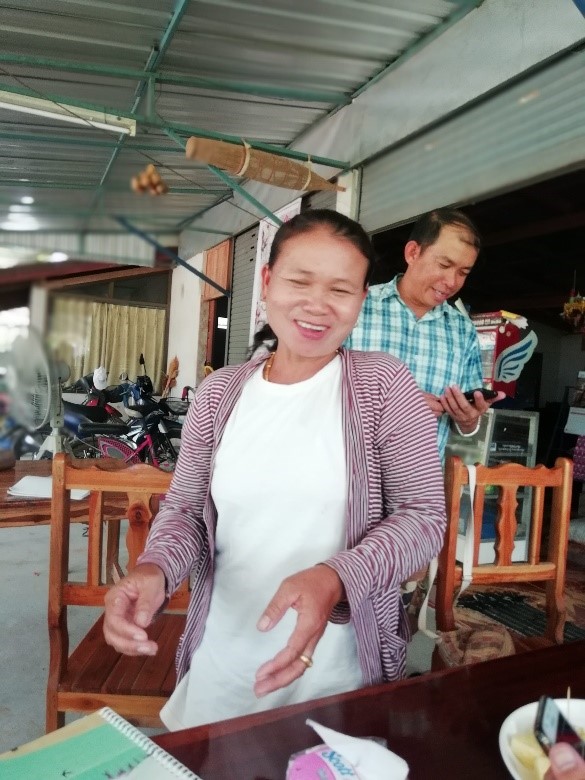
Demand for pork is rising, and with backstopping support from CDAIS the farmers are gradually improving their production process. Mrs Dao, for example, invested US$3000 of her own money to build a modern pig shed. CDAIS encouraged the group to work with the local District Agriculture and Forestry Office, and arranged for one of the extension officers, Mr Suthavon, to work with them. “A good design means the shed is easier to keep clean and is better for animal health,” he says. The sloping concrete floor makes it easy to hose the urine and manure into a drainage pipe that runs into an effluent storage pond nearby. Pigs are segregated by age which makes feeding more efficient.
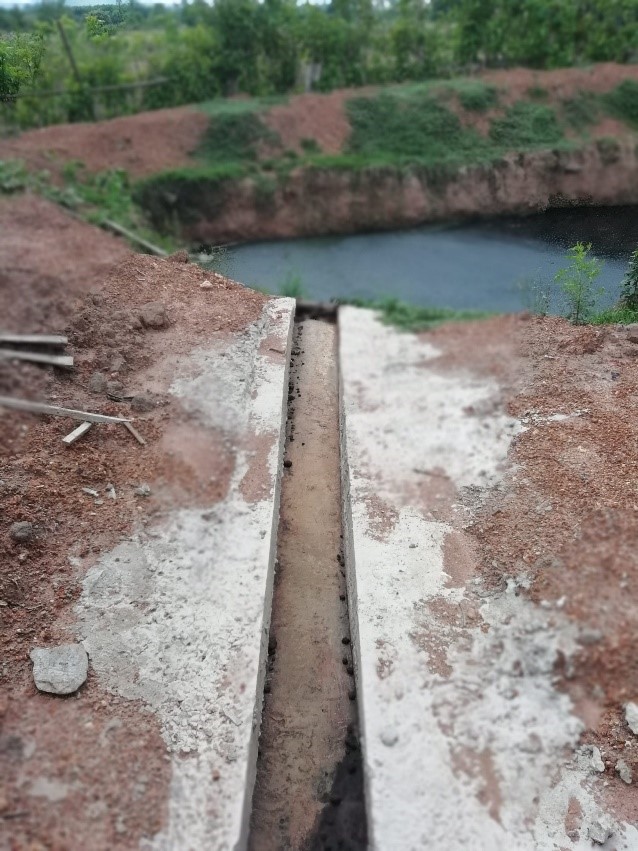
The road ahead
The Xanakham pig rearing group has big plans for the future. CDAIS coaching has resulted in a better working relationship with local technical advisory staff and to new links with traders and other stakeholders. With support from CDAIS, members are gaining technical knowledge through exchange visits and study tours and their own expanding experience. Several members are already investing or saving to invest in breeding their own pigs and the group action plan calls for developing value-added products. Group membership also helps build up individual numeracy and business management skills. Lack of these ‘soft skills’ is often a main reason many small enterprises like this fail to go beyond the household level, so building these capacities is an essential pre-requisite for success.
An important outcome of the CDAIS process is the confidence that comes from learning new skills and developing and implementing an action plan. Lampheuy Kaensombath, lead coordinator for CDAIS national innovation facilitators says, “I called Mr Sathian one day and he was in a meeting at the Governor’s office with representatives from DAFO, the Industry and Commerce Office, the Provincial Planning Office and some pig traders, talking about live-weight prices.” This is a good indication that the Xanakham pig rearing group is moving up the value chain and developing the skills they need to manage on their own. CDAIS staff have now started to support local technical advisory staff to scale out innovations to other farmer groups in the district using the same approach CDAIS developed with the Xanakham group. The CDAIS strategy was not to support the District Agriculture and Forestry Office before the farmer group had enough confidence and autonomy, as the usual relationship between extension services and farmers is often top-down. But the two partners now have a more balanced and profitable relationships in which the farmers identify and ask for what they need.
“An important outcome of the CDAIS process is the confidence that comes from learning new skills and developing and implementing an action plan.” Lampheuy Kaensombath, lead coordinator for CDAIS National Innovation Facilitators

